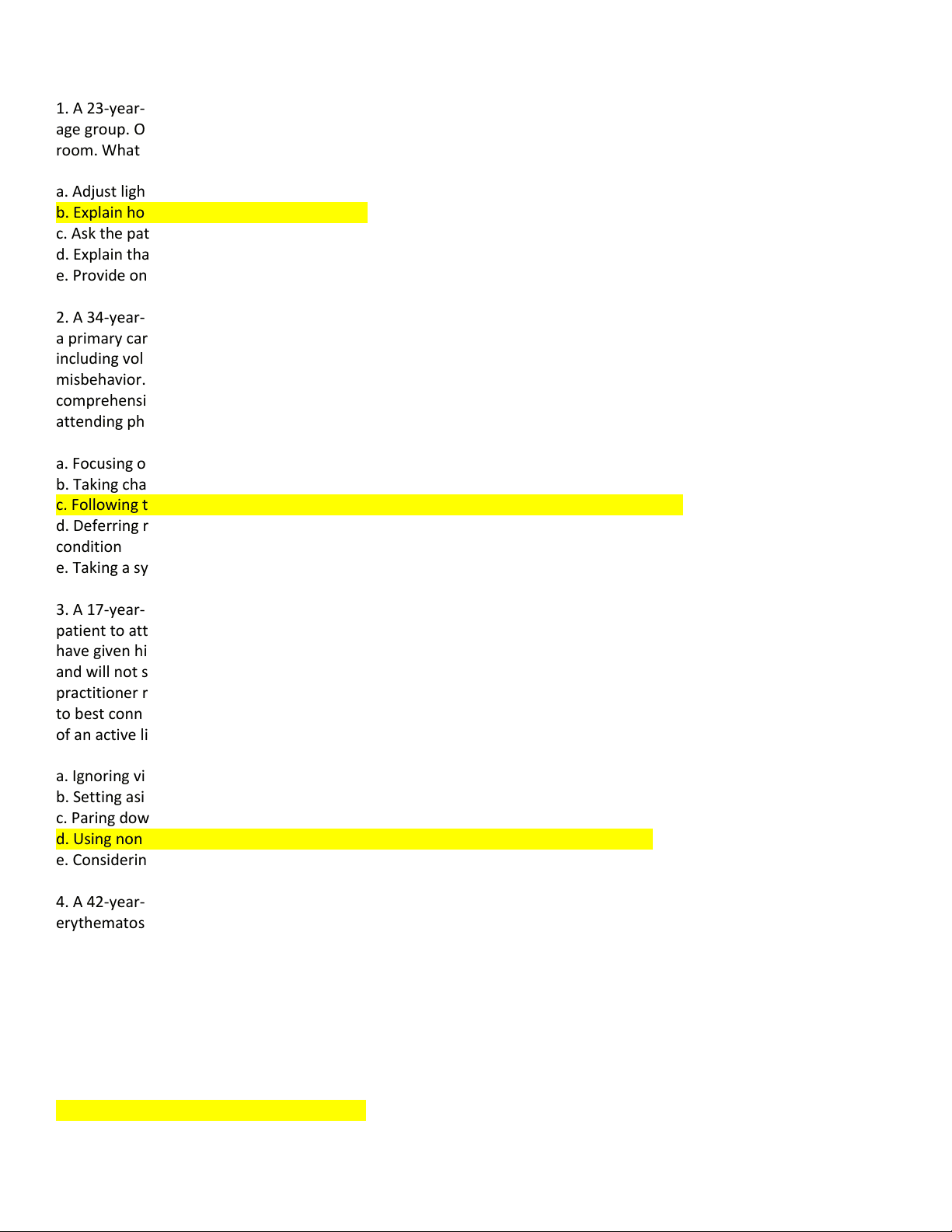
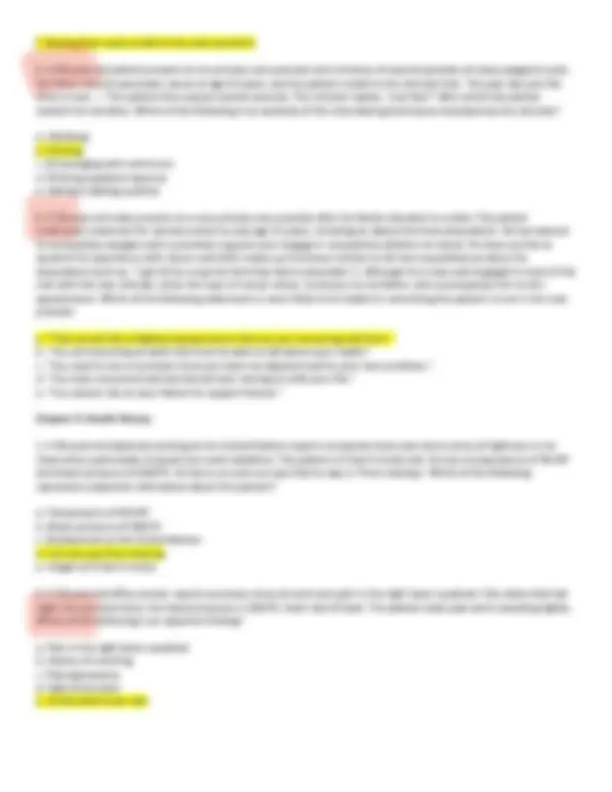

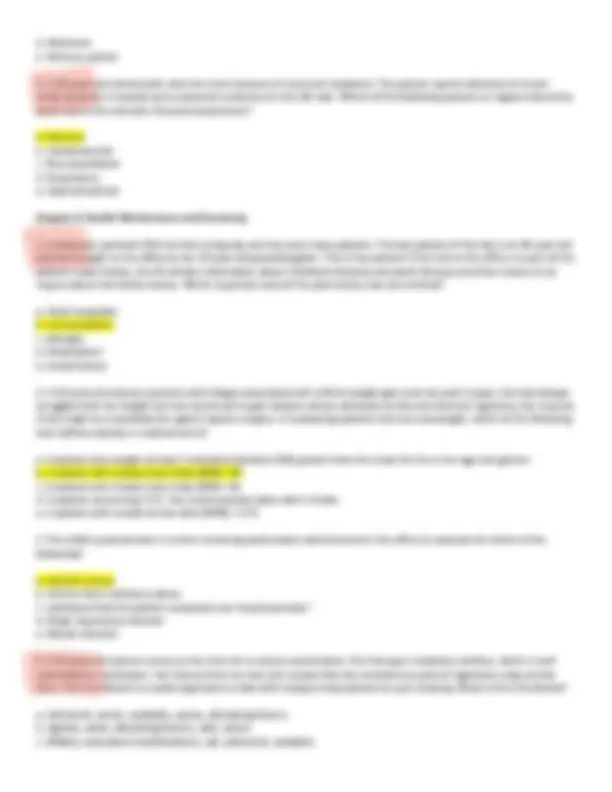
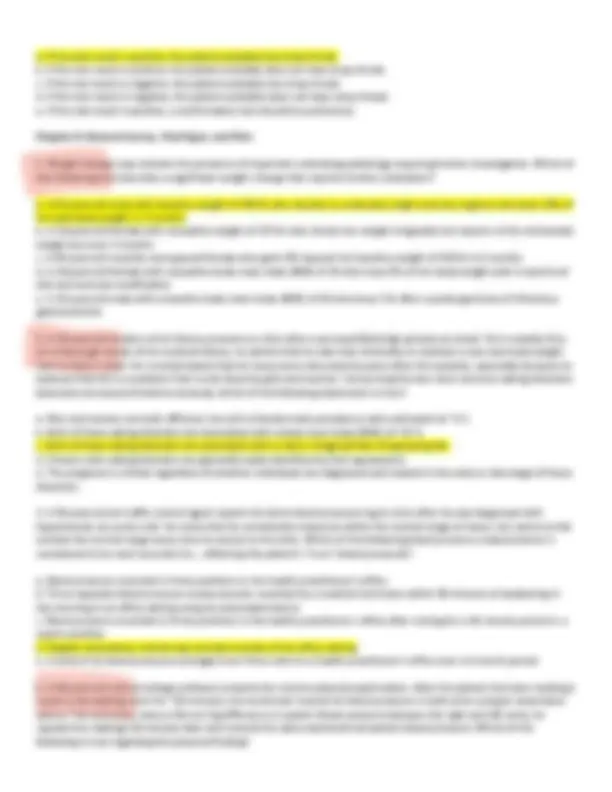
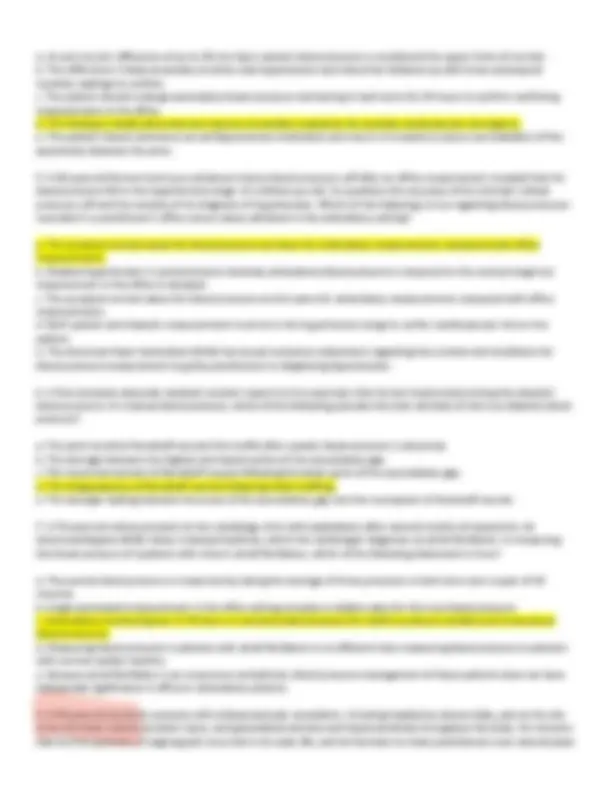
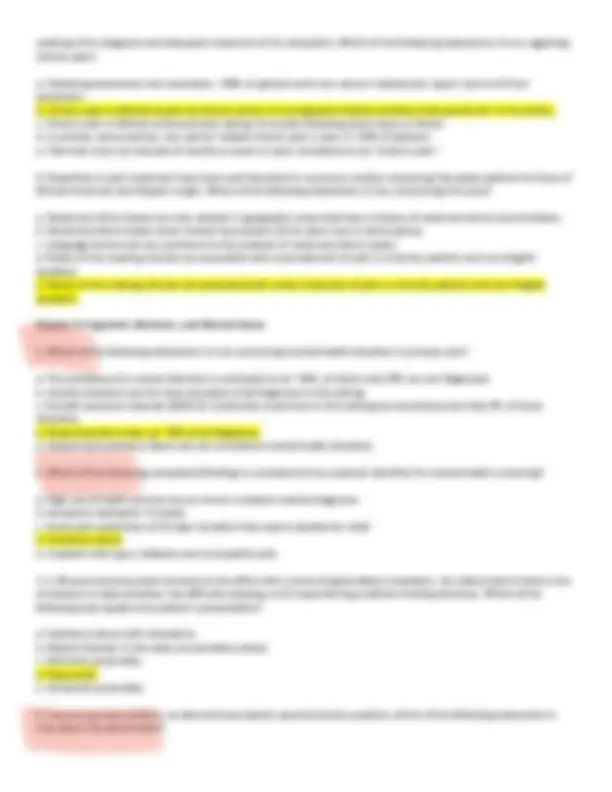
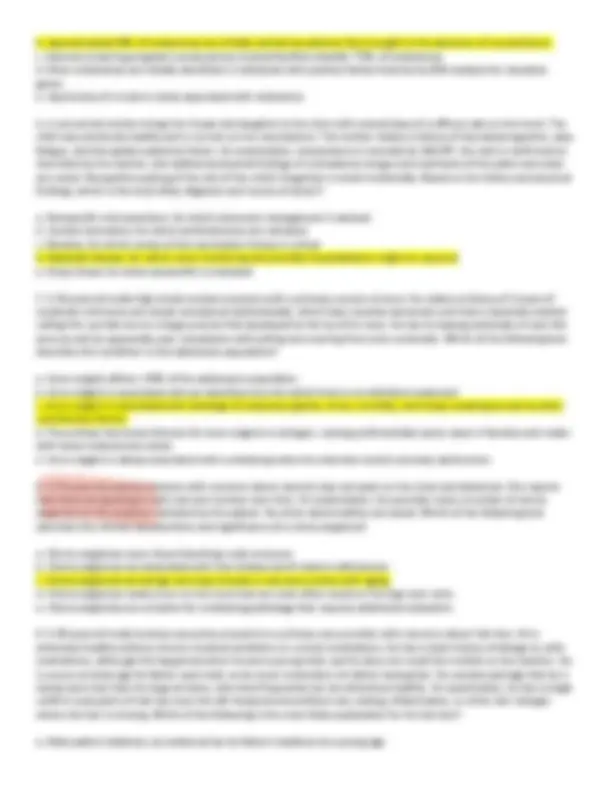
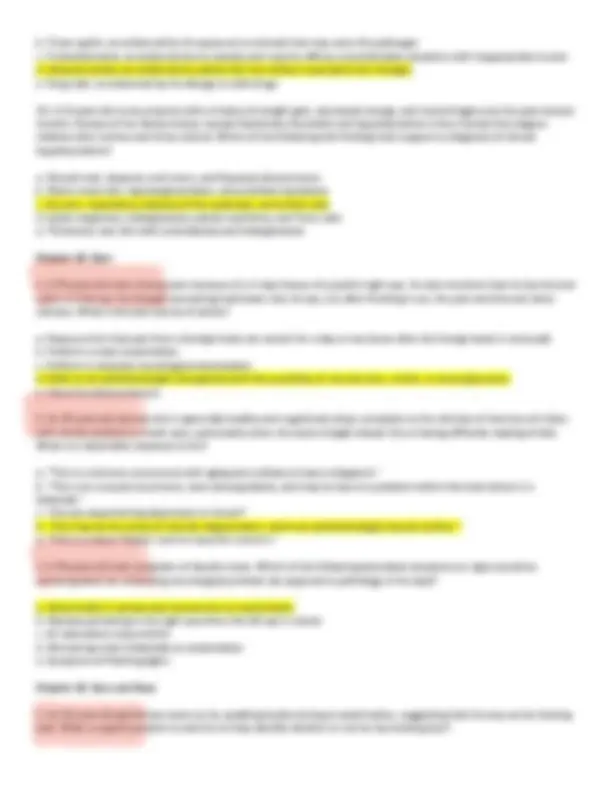
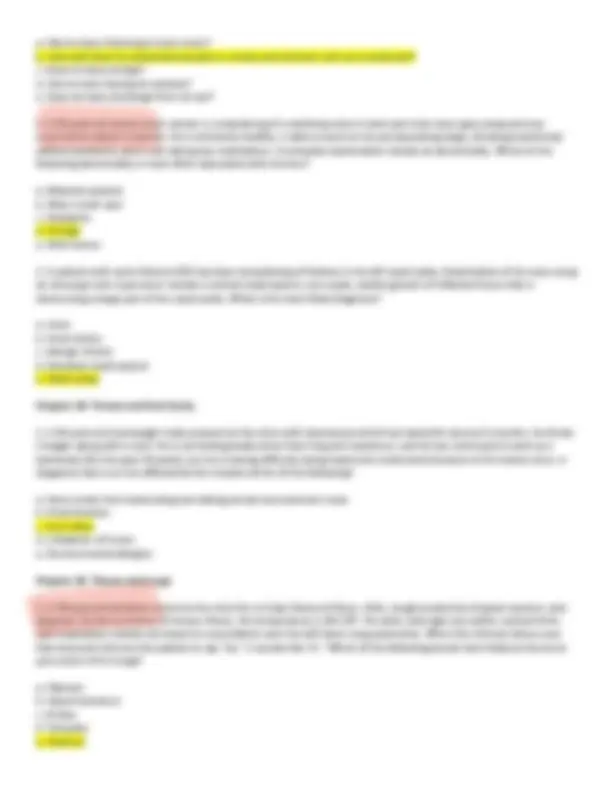

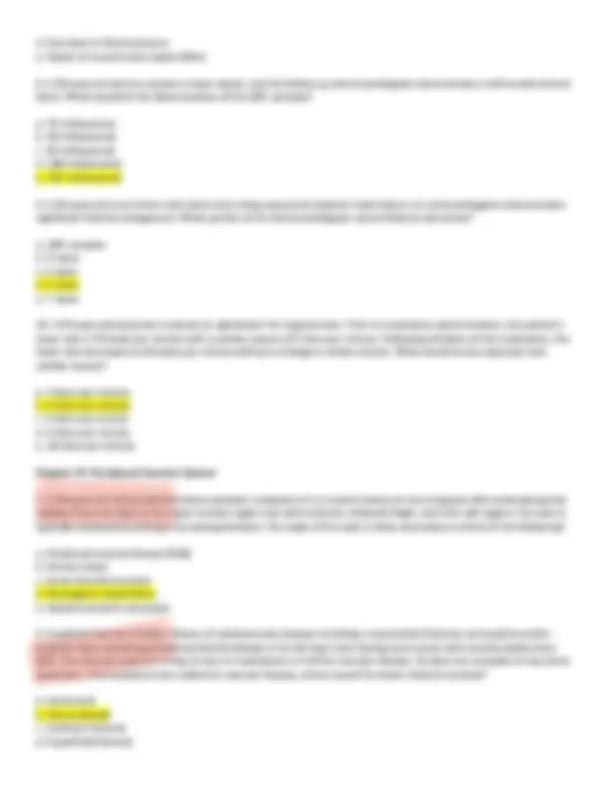
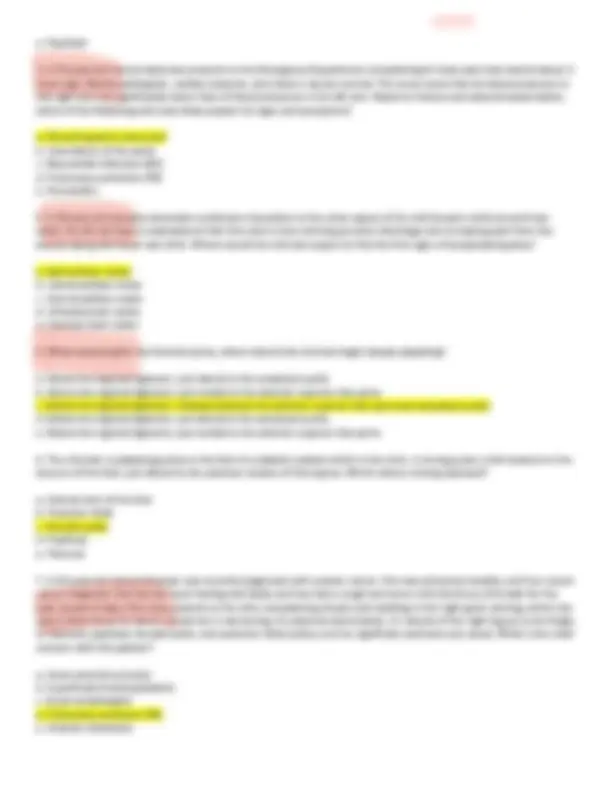



Study with the several resources on Docsity

Earn points by helping other students or get them with a premium plan


Prepare for your exams
Study with the several resources on Docsity

Earn points to download
Earn points by helping other students or get them with a premium plan
Community
Ask the community for help and clear up your study doubts
Discover the best universities in your country according to Docsity users
Free resources
Download our free guides on studying techniques, anxiety management strategies, and thesis advice from Docsity tutors
Chapter 1: Approach to the Clinical Encounter 1. A 23-year-old physician assistant (PA) student found that she felt nervous when called upon to examine men in her age group. On one occasion, she encountered a young male patient who appeared embarrassed to see her walk into the room. What should the PA do to minimize their mutual discomfort? a. Adjust lighting so it is tangential to the patient’s body. b. Explain how the examination will proceed. c. Ask the patient where he comes from. d. Explain that she is a PA student. e. Provide ongoing interpretation of findings. 2. A 34-year-old male with a history of complex social and medical needs (including current substance abuse) presents to a primary care teaching clinic. The patient has experienced a number of adversarial relationships with prior clinicians,
Typology: Quizzes
1 / 21

This page cannot be seen from the preview
Don't miss anything!














Chapter 1: Approach to the Clinical Encounter
Chapter 2: Interviewing, Communication, and Interpersonal Skills
d. Abdomen e. Nervous system
a. If the test result is positive, the patient probably has strep throat. b. If the test result is positive, the patient probably does not have strep throat. c. If the test result is negative, the patient probably has strep throat. d. If the test result is negative, the patient probably does not have strep throat. e. If the test result is positive, a confirmatory test should be performed. Chapter 8: General Survey, Vital Signs, and Pain
seeking a firm diagnosis and adequate treatment of his complaints. Which of the following statements is true regarding chronic pain? a. Following assessment and evaluation, ~80% of patients with non-cancer–related pain report control of their symptoms. b. Chronic pain is defined as pain not due to cancer or a recognized medical condition that persists for >3–6 months. c. Chronic pain is defined as focused pain lasting >8 months following acute injury or illness. d. In primary care practices, non-cancer–related chronic pain is seen in <10% of patients. e. Pain that recurs at intervals of months or years is never considered to be “chronic pain.”
a. They include false perceptions associated with dreaming and occurring with falling asleep and awakening. b. Objective testing can be performed by a trained neuropsychologist to ascertain the correct diagnosis associated with this complaint. c. Although alcoholism may be associated with abnormalities of perception, it is not considered a cause of hallucinations as this finding is due to its direct toxic effects. d. It may occur in association with a number of conditions including delirium and dementia, posttraumatic stress disorder (PTSD), and schizophrenia. e. By definition, hallucinations are confined to those abnormal perceptions that are either auditory or visual in nature.
b. Approximately 50% of melanomas are initially noticed by patients then brought to the attention of a practitioner. c. General screening programs conducted by medical facilities identify ~75% of melanomas. d. Most melanomas are initially identified in individuals with positive family histories by DNA analysis for causative genes. e. Asymmetry of a mole is rarely associated with melanoma.
b. Tinea capitis, as evidenced by his exposure to animals that may carry this pathogen c. Trichotillomania, as evidenced by his anxiety and need to diffuse uncomfortable situations with inappropriate humor d. Alopecia areata, as evidenced by patchy hair loss without associated skin changes e. Drug rash, as evidenced by his allergy to sulfa drugs
d. Decrease in blood pressure e. Repair of a ventricular septal defect
e. Popliteal